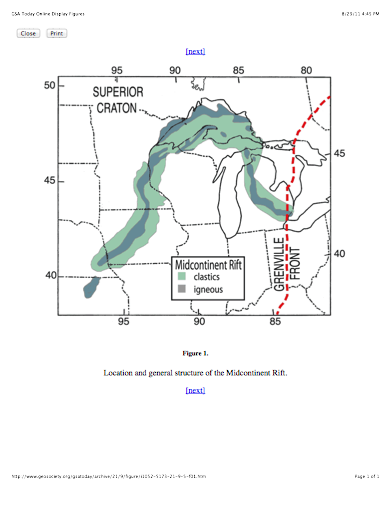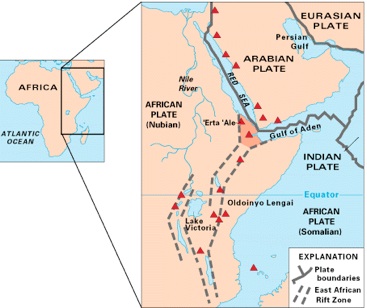The Lavas of the Portage Lake Lava Series are the result of a continental Rift, very much like the currently active Red Sea. Existence of a rift is a way to explain how such huge volumes of lava could have been erupted. It also helps explain the syncline we already proposed. A great crack across North America formed, stretching from Kansas to the UP and then on to Detroit.
A one hour lecture about this rift can be viewed with one click!







